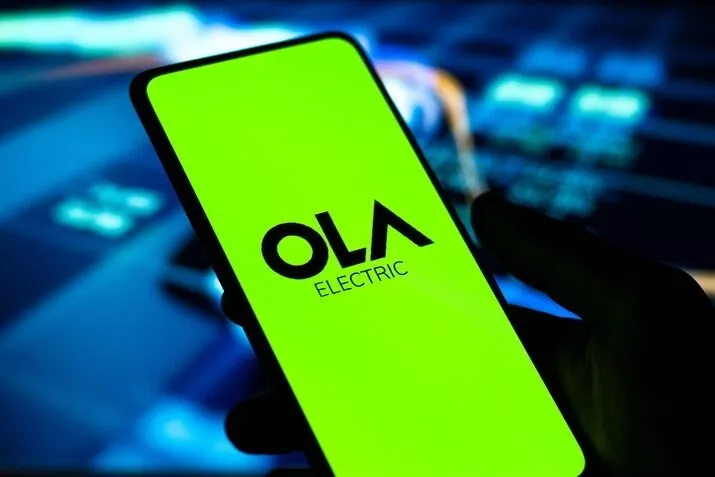Market News
Ola Electric shares surge nearly 5% on report of Niti Aayog’s meeting to push for faster EV two-wheeler adoption
4 min read | Updated on August 25, 2025, 13:57 IST
SUMMARY
Ola Electric Mobility, at its first AGM after going public in 2024, said shareholders have approved changes in the use of IPO funds and an extension of time for their utilisation, with 99.09% voting in favour.
Stock list

Shares of the firm had touched their one-year high of ₹157.40 apiece on August 20, 2024, while their 52-week low of ₹39.60 was hit on July 14, 2025.
As of 12:34 pm, shares of Ola Electric Mobility traded 2.31% higher at ₹48.26 apiece on the NSE. The rise in the stock price came after reports suggested that government think tank Niti Aayog called a meeting to address slow adoption of electric motorcycles in India, Hindu Business Line reported.
The meeting is expected to see participation from major two-wheeler manufacturers, including Hero MotoCorp, Bajaj Auto, TVS Motor, Ola Electric, Ather Energy, and Revolt Motors. According to reports, the primary focus will be on accelerating the electrification of motorcycles, a segment that dominates India’s two-wheeler market but has so far seen negligible adoption of electric models.
While electric scooters already hold nearly 15% of their segment, motorcycles account for two-thirds of India’s two-wheeler sales but only 0.1% penetration in the EV space. This imbalance poses a challenge to achieving the government’s electrification targets. Projections suggest electric scooters could capture up to 80% of sales by 2030, while electric motorcycles may remain at about 10%. Together, this would bring overall two-wheeler electrification to only around 36%, well below the desired levels unless motorcycles gain momentum.
The upcoming discussions are likely to cover strategies to overcome barriers such as high upfront prices. Possible measures include cost reduction, innovative financing options, and battery-swapping models. Unlike scooters, which benefitted from China’s existing ecosystem and supply chains, electric motorcycles have no such base, forcing Indian companies to build from the ground up.
Shares of the firm had touched their one-year high of ₹157.40 apiece on August 20, 2024, while their 52-week low of ₹39.60 was hit on July 14, 2025.
Meanwhile, Ola Electric Mobility, at its first AGM after going public in 2024, said shareholders have approved changes in the use of IPO funds and an extension of time for their utilisation, with 99.09% voting in favour. The revised plan allocates ₹1,049 crore for R&D, ₹901 crore for organic growth, ₹395 crore for debt repayment, and ₹248 crore for general purposes.
Ola Electric Q1 results:
Ola Electric Mobility reported a consolidated net loss of ₹428 crore for the April-June quarter of the financial year 2025-26 on Monday, July 14. The firm had reported a net loss of ₹347 crore in the same period last year. Ola’s revenue from operations stood at ₹828 crore in Q1 FY26, declining 50% from ₹1,644 crore in Q1 FY25.
The company’s EBITDA loss for the reporting quarter stood at ₹237 crore in contrast to ₹205 crore year-on-year (YoY). Ola said that its auto segment cash generation was within reach: “Q1FY26 nearly neutral, structural improvements in opex and working capital.”
It further stated that new launches were well received, there was strong uptake for Gen 3 scooters, bikes were generating a lot of interest, and MoveOS+ sales were bringing high-margin revenue.
One of Ola Electric’s most significant technological advancements is the in-house production of its 4680 Bharat Cell, which will begin powering vehicles starting this Navratri.
The company expects that by the end of FY26, it will have fully utilised the 1.4 GWh and installed the remaining capacity to get to 5 GWh and scale consumption to 5 GWh through FY27.
The EV maker has also successfully developed Heavy Rare Earths (HRE)-free motors,which are scheduled for production deployment in Q3 FY26.
Its Q1 auto GM of 25.6% was largely without PLI, and from Q2 onwards we should get the PLI benefit too, leading our exit GM for FY26 to be around 35-40%.
About The Author
Next Story

